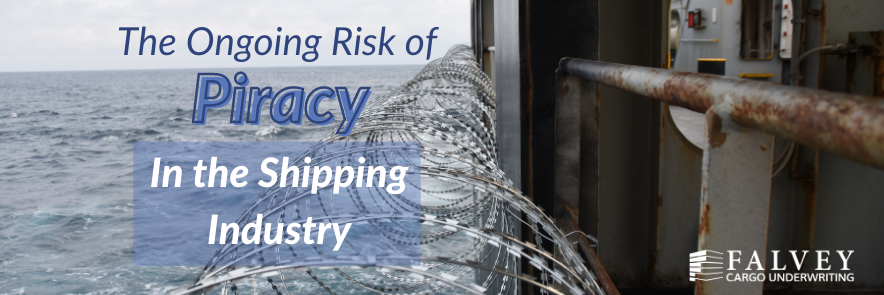Global pandemics, economic turbulence, and political shifts are typically the first things that come to mind when listing the biggest threats facing the shipping industry. But there is another prevalent and ongoing risk that many forget to consider: piracy. The reality of pirates is a lot darker than our cultural representations of Jack Sparrow or Bluebeard—many are armed and violent, putting cargo and crew at great risk. Here is some important information to remember about the state of piracy today.
Statistics on Piracy
The International Chamber of Commerce’s International Maritime Bureau (IMB)’s annual piracy report recorded an increase of piracy and armed robbery incidents in 2020. Globally over the year, there were 195 incidents of piracy and armed robbery against ships, up from 162 incidents in 2019.
The Gulf of Guinea in particular is dangerous, reporting 130 kidnapped sailors over 22 incidents in 2020—this accounts for 95% of the total kidnapped sailors (135) worldwide. Since 2019, the Gulf of Guinea has experienced an unprecedented rise in crew kidnappings and also faces an increased rate (80%) of attackers armed with guns.
Unfortunately, the piracy reports for this year aren’t abating. It’s early in 2021 and the IMB has already recorded multiple attacks.
Turkish Container Ship Attacked In January
One of the acts of piracy recorded early this year occurred on January 23, 2021. Four armed pirates boarded the Mozart, a Turkish container ship, off Nigeria's coast in the Gulf of Guinea. The Liberian-flagged vessel was headed to Cape Town from Lagos—the attack happened about 100 miles from Sao Tome Island, which is farther from shore than normal for Gulf incidents.
According to several accounts, this was a sophisticated and well-planned attack that involved guns and possibly explosives. The pirates kidnapped and assaulted the 15 crew members on board, resulting in the death of one crew member.
This attack demonstrates that piracy is still a pressing concern for the shipping industry, not only because of the rise in incidents, but also the rise in sophistication and violence of those incidents. There is growing international pressure to find more effective ways to protect shippers and cargo.
Insights From Falvey Cargo on Piracy
In practical terms, shippers have little to no control or influence over how a vessel operator and crew can prevent a pirate attack. Rather, being knowledgeable of the incident rate of these attacks along various shipping lanes allows shippers to contract with steamship lines that do not utilize these high-risk routes. Shipping lane risk assessment should be an integral part of a company’s overall supply chain risk management program, including a robust vetting process for the selection of logistics and transportation service providers.
Knowing the right questions to ask as part of this vetting and selection process is critical for proper and effective vendor management. A comprehensive risk management program will identify potential threats/hazards within a supply chain and implement applicable risk mitigation and countermeasures.
Protection Against Piracy
Falvey Cargo expertly evaluates the unique risks and needs of our clients’ cargo exposures. We’ll go the extra mile to ensure you have the coverage you need to protect your cargo, anywhere in the world, in any situation. Contact us to learn more.




